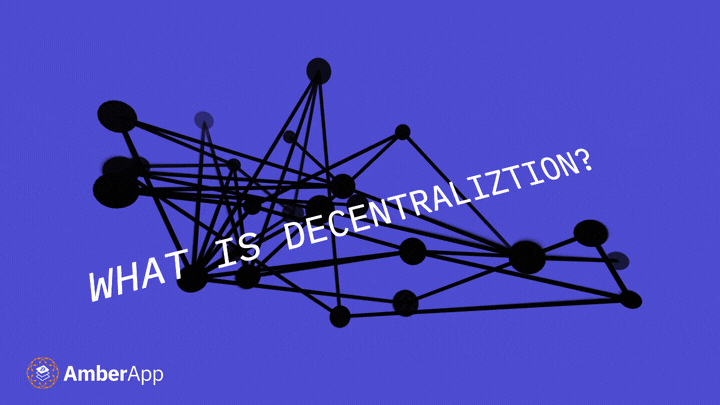Decentralisation stands in stark contrast to centralisation. It entails the dispersion of control within a system or organisation, distributing authority among various entities rather than being dictated or directed solely by a central entity. In other words, decentralisation involves devolving power, decision-making, and authority to lower tiers of an organisation or to autonomous entities like individuals or communities.
Decades of discourse among scholars, policymakers, and practitioners have looked into the intricate and multifaceted nature of decentralisation. Often positioned as a countermeasure to the pitfalls of centralised systems, decentralisation encompasses nuanced arguments and perspectives.
A pivotal advantage of decentralisation lies in its potential to enhance decision-making precision and optimise resource allocation. In decentralised setups, decisions are made in proximity to those directly impacted, harnessing local knowledge and expertise. Furthermore, accountability flourishes as decision-makers find themselves more directly answerable to those affected by their choices.
TribeTalk [LIVE]: Twitter Spaces
Decentralisation In Action
Diverse forms of decentralisation exist, including political, administrative, market, and money domains. Political decentralisation entails the ceding of power and decision-making from a central government to regional or local tiers of governance.
Administrative decentralisation refers to entrusting administrative functions to lower governmental levels or non-governmental entities. Fiscal decentralisation involves the transfer of revenue-raising capabilities and financial resources from a central government to regional authorities. Market decentralisation promotes competition and the establishment of decentralised markets.
A prominent illustration of political decentralisation is federalism, where authority is shared between a central government and regional administrations. The United States, for instance, divides power between its federal and state governments, fostering localised decision-making that is intended to align and resonate with diverse needs at local scales.
On the other hand, fiscal decentralisation, spurs economic growth and reduces regional disparities. Revenue-sharing agreements, implemented in certain countries, ensure that a portion of national revenue reaches local authorities, channeling resources to areas requiring utmost attention. Meanwhile, market decentralisation is an important catalyst for competition and innovation. This has led to notable shifts in sectors like telecommunications. Intensified competition within decentralised markets translates to improved service quality and reduced costs.
Decentralised Incentives or The Way of Bitcoin
Incentives play a significant role in mitigating the centralising tendencies of human-centric systems. One notable example of this principle is the Bitcoin monetary protocol, which has been designed to counter centralisation in the realm of currency and financial transactions. Let’s explore how Bitcoin’s incentives contribute to this mitigation:
1. Decentralised Mining Network: In Bitcoin, the process of validating and adding transactions to the blockchain, known as mining, is crucial to the network’s security and operation. To incentivise participation in mining, Bitcoin introduces a competitive reward system. Miners compete to solve complex mathematical puzzles, and the first one to solve it gets the right to add a new block of transactions to the blockchain. This process rewards miners with newly minted Bitcoins and transaction fees.
Mitigation of Centralisation: By offering incentives for mining, Bitcoin avoids centralisation of mining power. Individuals and entities are motivated to participate in mining, leading to a distributed and decentralised network of miners across the globe. This decentralisation reduces the risk of a single entity gaining excessive control over the network, promoting security and resilience.
2. Proof of Work (PoW) Consensus Mechanism: Bitcoin relies on the Proof of Work consensus mechanism, where miners expend computational power to secure the network. This system ensures that participants have a tangible cost, in terms of energy and resources, associated with their participation.
Mitigation of Centralisation: The PoW mechanism makes it difficult for any single entity to dominate the network by requiring substantial computational effort. This discourages centralisation of mining power and promotes a more distributed network of miners.
3. Limited Supply and Halving Events: Bitcoin’s issuance schedule is programmed to gradually decrease over time through a process called “halving.” Approximately every four years, the number of newly minted Bitcoins that miners receive as a reward is cut in half. This scarcity mechanism helps maintain the value of Bitcoin and encourages long-term participation in the network.
Mitigation of Centralisation: The limited supply and halving events create a built-in incentive for miners and holders to engage with the network over the long term, rather than pursuing short-term gains through centralisation.
4. Decentralised Governance: The decision-making process for changes to the Bitcoin protocol is decentralised and community-driven. Participants can voice their opinions and contribute to the development process, fostering a diverse range of perspectives.
Mitigation of Centralisation: Decentralised governance helps prevent a small group from imposing changes that might centralise control over the protocol. It ensures that a wider range of stakeholders has a say in the network’s evolution.
Conclusion
Decentralisation is a multifaceted paradigm wielding profound implications for governance, service delivery, and economic advancement. The incentives embedded within the Bitcoin protocol effectively mitigate the centralising tendencies that often arise in human-centric systems. By rewarding decentralised participation, imposing costs on centralisation efforts, and promoting a distributed network, Bitcoin’s incentives contribute to maintaining a decentralised and resilient financial system.
Balancing the scales between centralisation and decentralisation is imperative to harmonise policies with overarching objectives, while harnessing localised knowledge to elevate service provision. Bitcoin is an example of how well-designed incentives can counterbalance the centralisation pressures inherent in human-centric systems, leading to more equitable and locally diverse decentralised outcomes.
Learn More
Do you want to learn more about Bitcoin and why money matters? Click this link to keep reading. Download the AmberApp and start stacking sats in minutes.








